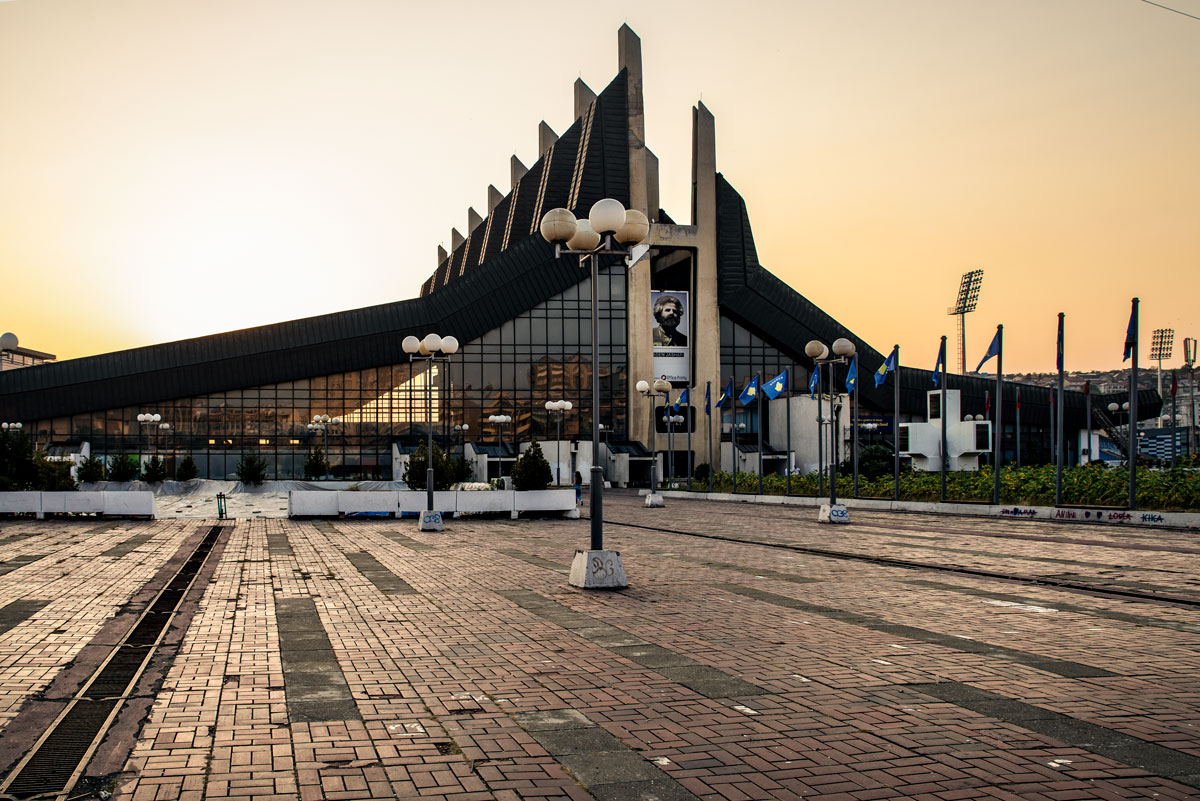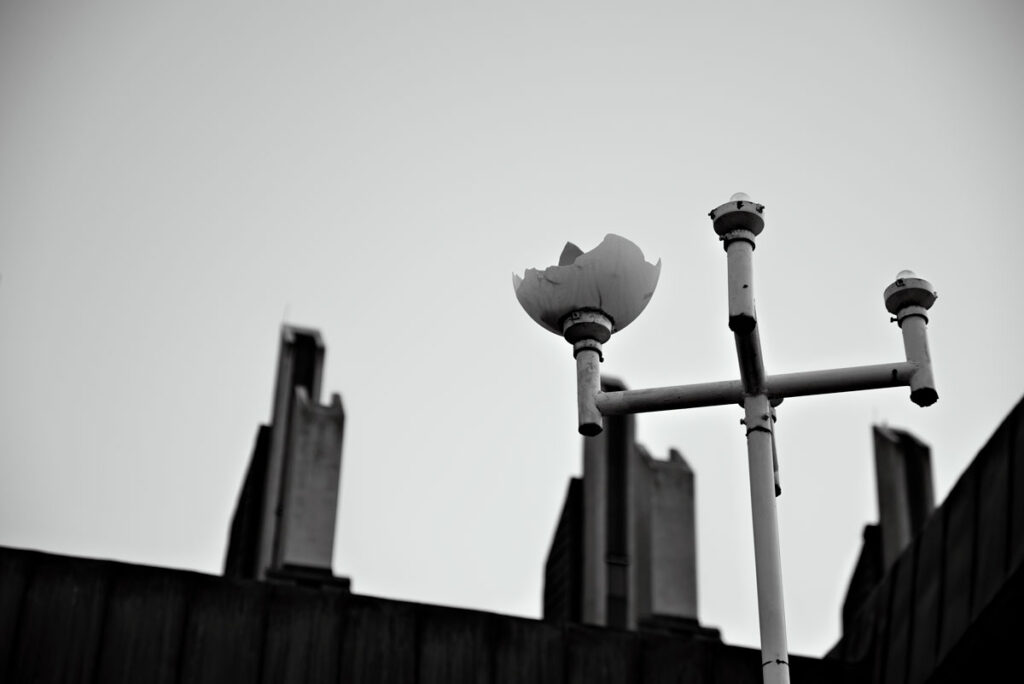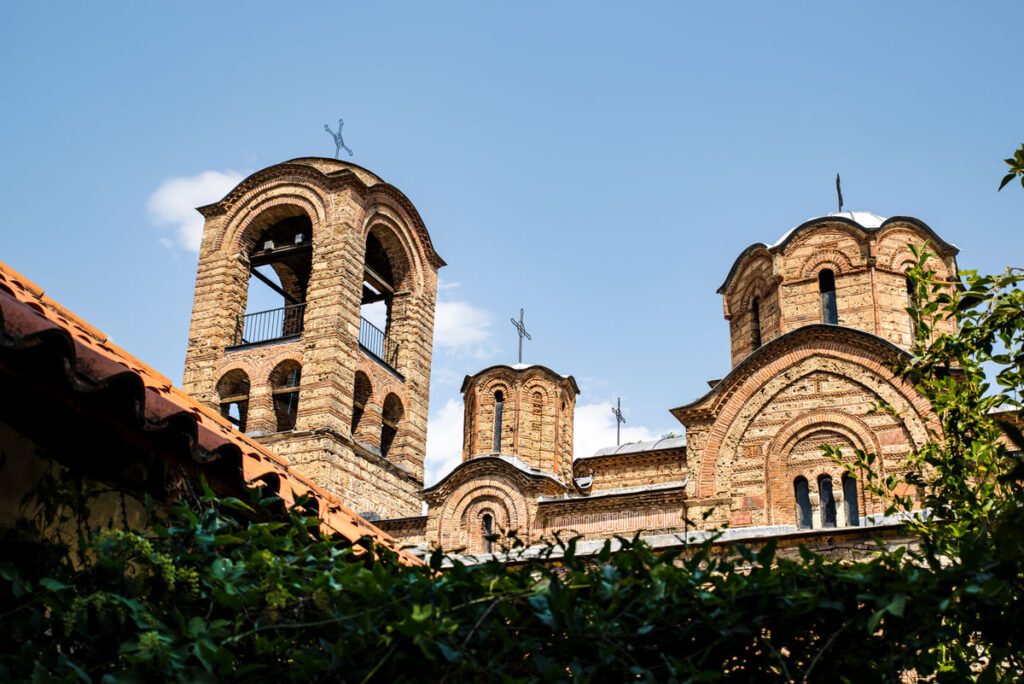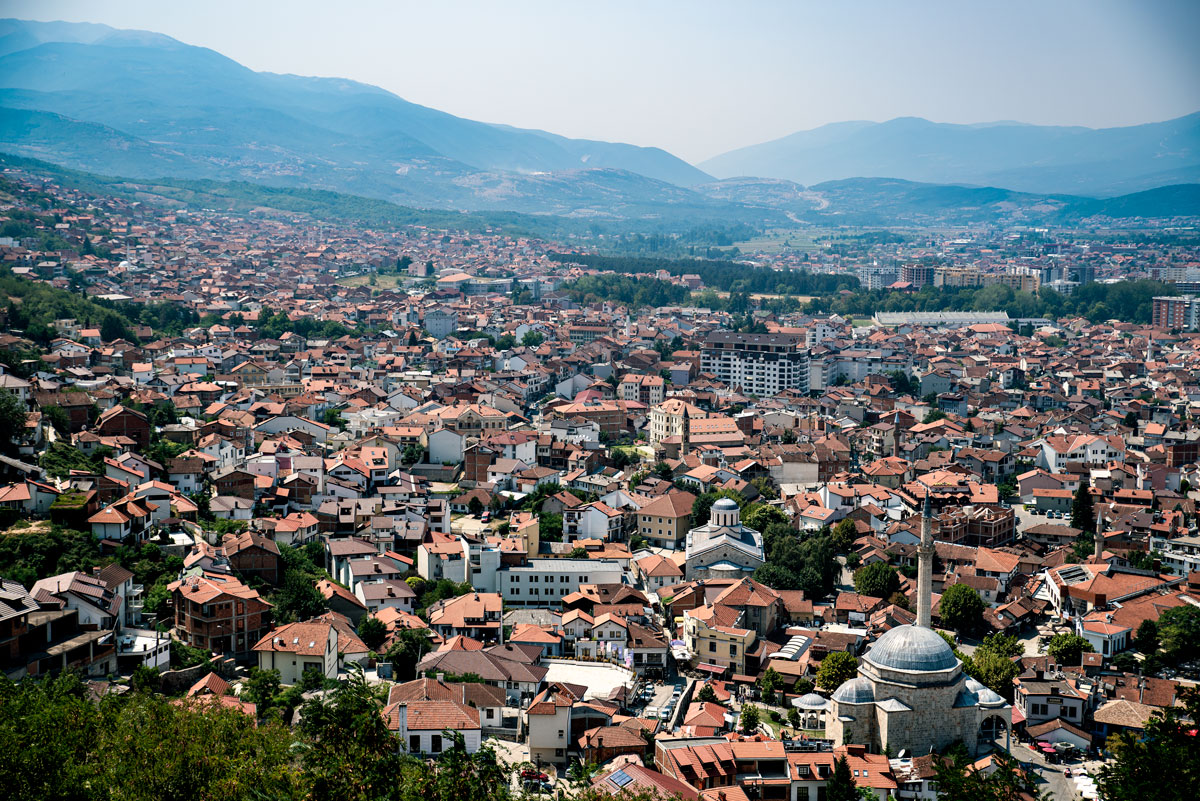Kosovo
Things are complicated in Kosovo. Only 115 out of 193 UN states recognize the small country as an independent state. Until the 1990s, it belonged to Yugoslavia, then to the Federal Republic of Yugoslavia, before freeing itself from Serbia in 2008. The vast majority of the Kosovar population is Albanian. For this reason, there are repeated discussions about Kosovo joining Albania to form a “Greater Albania”. Only the north of Kosovo is inhabited by Serbs. The borderline between the two ethnic groups runs along the river Ibar through the town of Mitrovica. Violent clashes occur here time and again. Other ethnic groups also inhabit the multi-ethnic state of Kosovo: Bosniaks, Croats and Turks.

From Montenegro, we cross the Prokletije – the northern Albanian Alps – to the Kosovan border crossing. It’s not very busy and the customs officer greets us with a smile. He leads us into a small office where we have to quickly sign up for car insurance, then he releases us into his Kosovan homeland.
We take a lunch break in Peja. Many cars, simple houses and an empty pedestrian zone characterize the cityscape. In the evening, when the heat of the day has subsided, people will come out of their homes and fill the cafés. Refreshed, we drive on to the Mirusha waterfalls to the east of Peja. A rough gravel road leads steeply downhill into a valley to a parking lot full of cars. Directly behind it, a mighty waterfall pours into a small lake. Families with children swim happily in the cooling water. We follow a short via ferrata up to several levels, from where we enjoy a magnificent view. As the afternoon turns golden, we return to the car.

The mood of the country is crystallized in Pristina. It oscillates on a continuum between awakening and demolition. The cityscape is strongly characterized by Jugoslavian-socialist architecture. Many corners and alleyways seem abandoned or even run-down. But in between them, symbols of a new beginning stand out again and again, symbols of a self-confident population that does not feel it is part of Serbia, but sees its future in joining Albania.
The Albanian national hero Skanderberg adorns the square in front of the National Theater. The letters NEWBORN stand as an art installation in ever-changing colors in front of the sports center. A main street is named after George W. Bush, a boulevard after Bill Clinton. The former American presidents are revered here because they pushed for NATO to intervene in Kosovo and thus prevented genocide against the Albanians. The city is searching for itself between Islam and Christianity, tradition and modernity, identity and rapprochement with Albania. Everything seems possible, everything could be promising – only the way back is not an option.





The streets are full of sunburnt and smiling people. The summer is hot, water fountains cool you down. The bars are filled with families and teenagers. Colorful life wherever we look. The smoke from water pipes and barbecues hangs in the air, colorful umbrellas hang above the heads of passers-by between the trees.



Away from the city in a meadow somewhere in the west of Kosovo. We have left the cities behind us and set up camp for the night. A nearby village offers us some shelter. In the late afternoon, two curious men come by, inspect us and our car with roof tent. They nod, we raise our hand in greeting – and they are gone again.
The peaks of the Albanian Alps rise on the horizon. The sun sinks lower and lower, the evening light becomes softer. First it shimmers golden, then orange, then blue. The cloudless sky is a sea of flames. The last rays of light on this hot August day are caught in the branches of a gnarled tree. The air is dusty, it hasn’t rained for weeks. Sweat on our skin – the night stays warm. With the darkness come the stars. Trillions of tiny dots, the light of ancient times from celestial bodies that may have recently burned up in a supernova.



Our last stop in Kosovo is Prizren. As inconspicuous as the city may seem today, it has been important over the centuries. Once considered the center of Serbian Orthodox Christianity, it was joined by Islam with the expansion of the Ottoman Empire. Prizren was and still is an important hub for trade and the meeting of the Occident and Orient.
The Serbian Orthodox church Bogorodica Ljeviška – at times used as a mosque – is fenced in with barbed wire. In the past, hatred of Serbian rule was also unleashed here. We cross the dried-up river over an old stone bridge. The Sinan Pasha Mosque dominates the district. Past it, a steep road leads us up to a medieval Serbian fortress. The area is vast, and apart from the thick fortress walls, hardly anything remains. But the view over Prizren is wonderful. Gentle mountain ranges frame the town. The red roofs of the houses lie before us, churches and mosques stand close together.




Shortly afterwards, we leave Kosovo in the direction of Morine. The sun beats down on us and the country becomes flatter the further south we go. The landscapes of Kosovo are hilly and dry. Barren scrubland, rough rock. The towns are not particularly pretty and you might ask yourself how this small country can be so embattled. The answer lies buried somewhere under history, ancestry and nationalism, belonging and folk heroism, a vague idea of unity and a shaky vision of the future. Kosovo is a melting pot, a country torn apart. But its people are full of confidence.
Info about our trip
Is Kosovo a worthwhile destination? Yes and no. Hardly anyone will consciously decide to spend two weeks in Kosovo and fly directly to Pristina. Most people, instead, will integrate Kosovo into their Balkan vacation. You should definitely bring an interest in the country’s history with you – in our opinion, Kosovo has fewer beautiful cities and less varied nature to offer than the surrounding countries. The country’s long war of independence and economic weakness are plain to see. On the other hand, the conflict between Serbia and all the other former Yugoslavian states can be experienced up close here.
The best way to travel around this small country is by car. The main roads are well-developed and the euro is the main means of payment. The infrastructure is generally in good order. In an emergency, you can quickly travel to one of the surrounding countries, which may offer slightly better care.
The price level in Kosovo is significantly lower than in Germany, which makes a vacation there affordable. Accommodation, restaurants and transportation are much cheaper. A meal in a restaurant often costs less than half the price in Germany. Entrance fees for sights and public transport are also affordable. Especially in rural areas, you can stay and eat well for little money.
The food in Kosovo is a mixture of Balkan and Mediterranean influences. Typical dishes include flija, a layered pancake, and pite, a filled pastry specialty similar to börek. Fresh vegetables, grilled meat and sheep’s cheese play a central role, with meat really taking center stage, as is the case everywhere in the Balkans. Ćevapi, small minced meat rolls, and tavë kosi, a lamb dish with yoghurt, are popular dishes. They are often served with homemade bread. For a sweet finish, there is baklava or tullumba. Local wines and coffee are also widely available and round off the meals.
In Pristina, we stayed in a nice and clean Airbnb apartment, otherwise we camped in the wild. In the cities you can find cheap and good hotels, in rural areas simple guesthouses and pensions. Of course, when camping in the wild, you need to be particularly careful because there may still be buried mines. So it’s best not to leave the beaten track.
The security situation in Kosovo is actually stable, especially in tourist areas and larger cities such as Pristina and Prizren. Tensions with Serbia increase from time to time, so keep an eye on the media during your stay. The crime rate is relatively low and violent crime is rare. However, travelers should take care of their valuables as everywhere else, especially in crowded areas. In general, the country is safe for tourists and the hospitality of the locals contributes to a great travel experience.
Traveling with children in Kosovo is pleasant, as the people are very child-friendly and helpful. In restaurants, the needs of families are often taken into consideration and children are warmly welcomed. Especially in larger cities such as Pristina, there are parks and playgrounds. Otherwise, the tourist infrastructure is not always optimally geared towards families, especially away from the main cities.
It is particularly easy to get around between larger cities such as Pristina, Prizren and Peja. Buses are the most popular means of transport and connect most towns and villages at reasonable prices. Rental cars are also a good option for exploring the rural areas flexibly, the roads are often easy to drive on but sometimes narrow and poorly lit. If you enter the country with your private car, you will most likely have to buy car insurance at the border (it doesn’t cost much).
Off-road driving: There are plenty of gravel and dust tracks to discover in Kosovo. Most dirt roads are legally passable. Beginners to off-road driving will get their fill here. People with more ambition are better off driving further to Albania.
- Anyone interested in the modern history of the Balkan region should read Marie-Janine Calic’s Geschichte Jugoslawiens
- Journalist Mechthild Henneke has written a moving novel about the war in Kosovo: Ach, mein Kosovo!
- Hans-Peter Kriemann provides a good historical insight into the background to the Kosovo War in Der Kosovokrieg 1999
